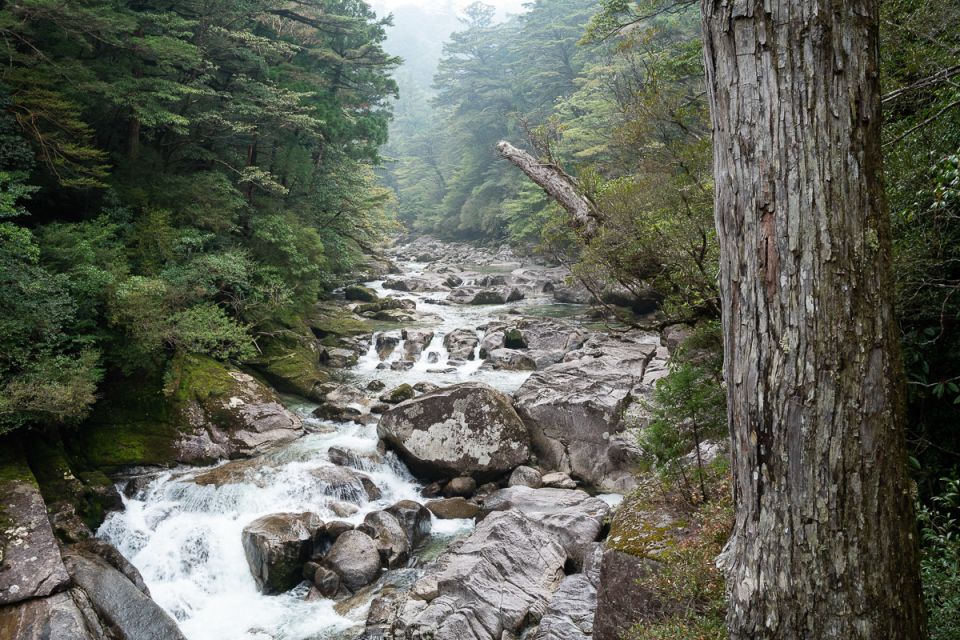Japan is made up of thousands (yes, thousands) of small islands, and off the southern tip of the Kyushu mainland, one such island named Yakushima has quite the reputation. It is an UNESCO World Heritage Site and also the wettest place in Japan, which has led to a local saying that it "rains 35 days a month". Famous for its pristine forests with ancient Japanese cedars and hikes through mountainous terrain, the island draws its fair share of nature lovers and people looking to get away from the mainland. Since we were already exploring Kyushu, we decided to tack on a visit to Yakushima via a two-hour ferry ride to see what the fuss was all about.

Getting around Yakushima is fairly easy with a rental car and I highly recommend it to have complete control over your schedule. To get acquainted with the island, we spent the first day doing some light hiking. Yakushima is known for having many Japanese cedars that are well over 1,000 years old, known as Yakusugi. The aptly named Yakusugi Land has easy driving and hiking access to a slew of these ancient trees and was the perfect warm-up act. For the majority of our visit there, the sky was overcast and we were occasionally enveloped by fog, which is not all that uncommon there. It definitely made for a mysterious atmosphere.
On the second day, we visited Shiratani Unsuikyo. This hike took us into the heart of the island, leading us through the famous mossy forests that inspired Ghibli's Princess Mononoke. This is probably also the most popular trail in Yakushima. Although we arrived at the trailhead pretty early by our standards, there were already a bunch of cars parked at the lot.
The trail culminates with a steep climb to a large boulder called Taiko-iwa. This was the most strenuous portion of the hike, but the views are rewarding. Standing on top of the boulder, you get a panoramic view of the inner island, including some rather tall mountains in the background.
One other notable place we visited was Oko-no-taki, the tallest waterfall on the island. Since we were already making a drive around the entire island, this made for an easily accessible pitstop. Standing under the falls and listening to its roar, it's hard not to admire its grandness, something that pictures don't capture well.
Throughout this trip, we stayed at Shiki no Yado, a minshuku on the southern part of the island. Given the high humidity, being able to just lie down in the center of a room lined with tatami mat was pure bliss. It was also the best way for us to recharge every night. Not that we needed it though. Even with our packed itinerary, our time spent on Yakushima was strangely rejuvenating. It was definitely one of the more relaxing destinations we've visited. As I reflect back upon this trip, I feel enveloped by a sense of calmness, as if the tranquil energy of this island continues to live within me.